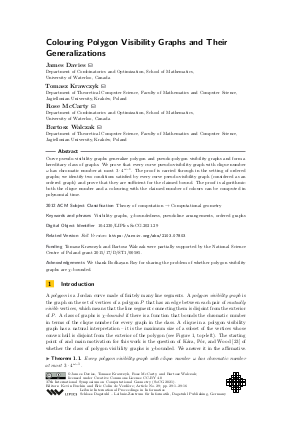LIPIcs.SoCG.2021.29.pdf
- Filesize: 0.65 MB
- 16 pages

 Creative Commons Attribution 4.0 International license
Creative Commons Attribution 4.0 International license

































Feedback for Dagstuhl Publishing